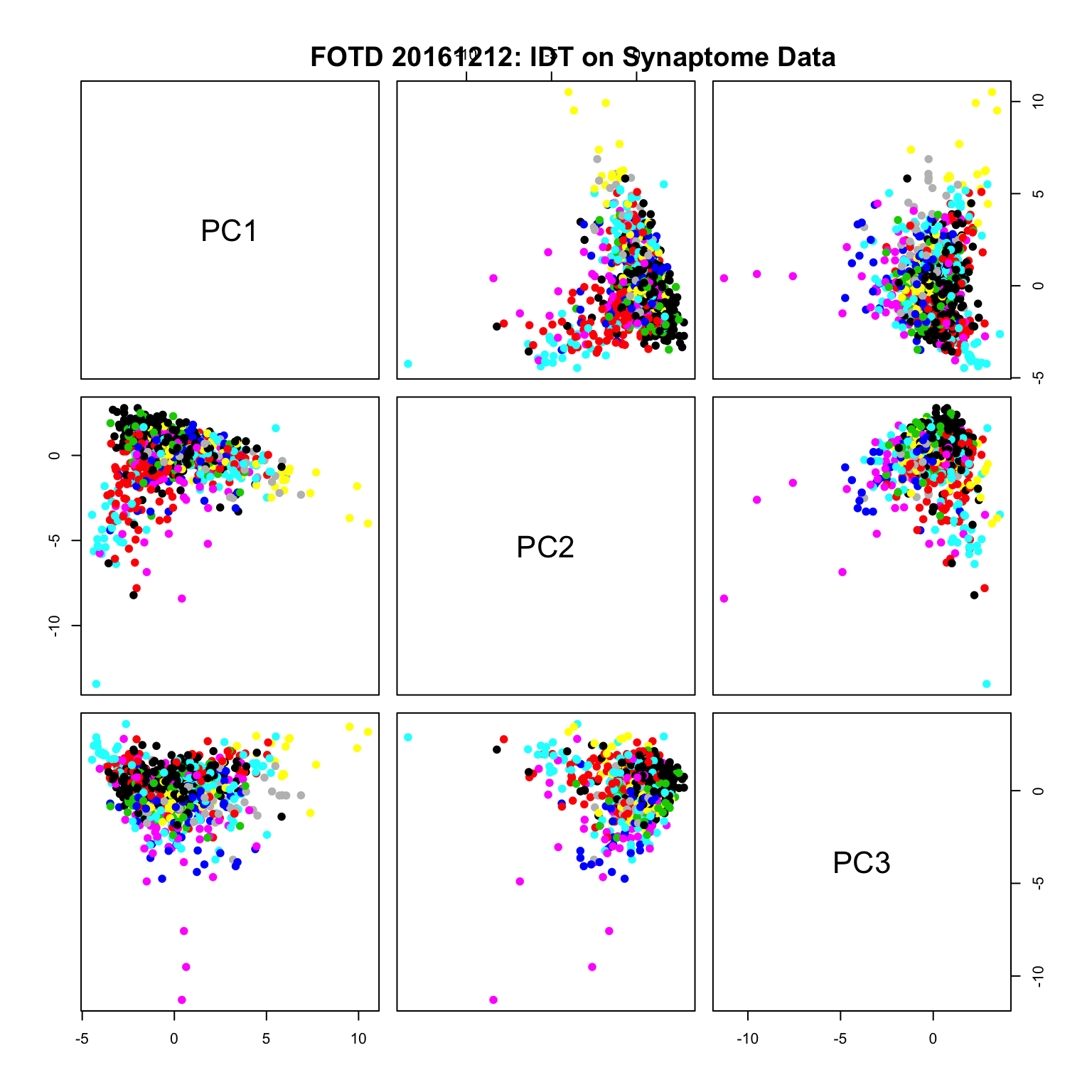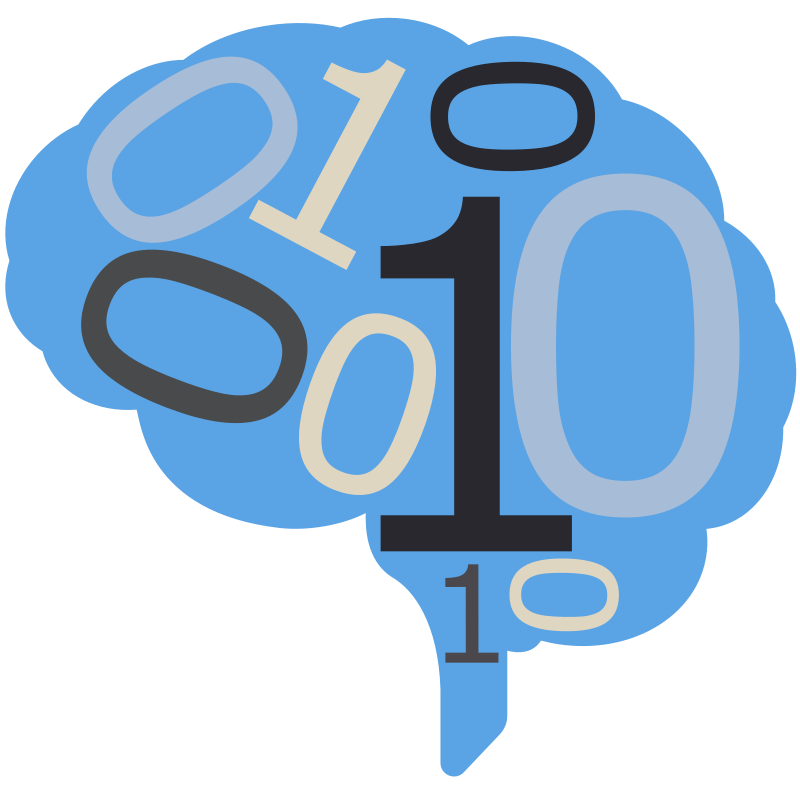Here we select a random half of the synaptome data, different from the half we have been using.
The data are then z-scored and principal components are computed to the 3rd elbow by Z-G.
require(meda)
source("~/neurodata/synaptome-stats/Code/doidt.r")
load('~/neurodata/synaptome-stats/Code/cleanDataWithAttributes.RData')### Setting a seed and creating an index vector
### to select half of the data
#set.seed(2^10)
set.seed(317)
half1 <- sample(dim(data01)[1],dim(data01)[1]/2)
half2 <- setdiff(1:dim(data01)[1],half1)
feat <- data01[half1,]
feat2 <- data01[half2,]
#set.seed(2^10)
set.seed(317)
ss <- sample(dim(data01)[1],1000)
small <- data01[ss, 1:24, with = FALSE]dat <- small
zfeat <-
dat[, lapply(.SD, scale, center = TRUE, scale=TRUE)]
pr2 <- prcomp(zfeat)
cur <- rCUR::CUR(as.matrix(zfeat), k = 3)@C
(elb <- getElbows(pr2$x, 3, plot = FALSE))## [1] 3 18 21
X <- pr2$x[, 1:elb[3]]
out <- doIDT(as.matrix(X),
FUN="mclust",
Dmax=ncol(X), ## max dim for clustering
Kmax=9, ## max K for clustering
maxsamp=nrow(X), ## max n for clustering
samp=1, # 1: no sampling, else n/sample sampling
maxdepth=3, # termination, maximum depth for idt
minnum=100, # termination, minimum observations per branch
verbose=FALSE) ## number of leaves (clusters) = 22
idtlab <- out$class
pairs(X[,1:3], pch=19,col=idtlab)
title("FOTD 20161212: IDT on Synaptome Data")
